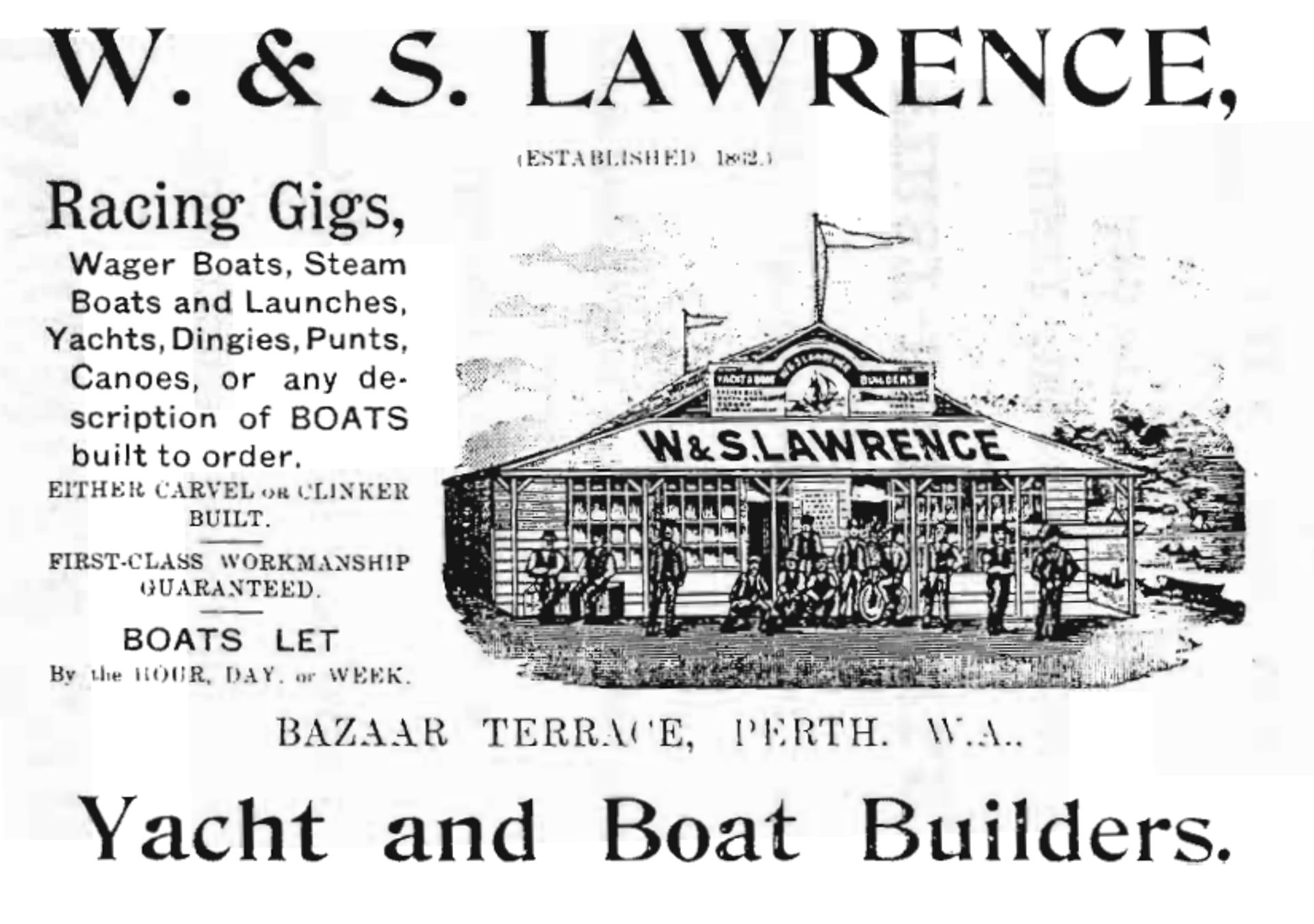Dreadnought
Vessel Name: Dreadnought
Genj
Drowned at Sea; Body never recovered
18 April 1904


The Dreadnought was one of the many unregistered boats working in the pearling industry during the manic years of pearl shelling in 1800s and early 1900s. She was licensed in Broome as B273 to John Stewart.
John was a self-made man. He started as a deckhand and shell-opener in the early 1800s. He saved enough to purchase the Florence in 1884. Florence was built for shelling by Perth boatbuilder William Lawrence Snr. She was caught in a cyclone in 1881. Dismasted and damaged, she sank and was abandoned. John salvaged and repaired her and put her back to work; the first pearl boat he owned. He worked inshore grounds along the coast from Broome to Cossack, and by 1904 he owned Sapphire, Pearl and Dreadnought, three pearling luggers built for the North West’s rugged conditions. All three boats worked within sight of each other, and John lived aboard Sapphire.
It is unclear who built Dreadnought, since she was not a WA registered vessel. William Lawrence and his sons Samuel and William Jnr built the first and last purpose-built luggers for pearling in the North West. They were prolific builders of all types of vessels. The other possible builder was Charles Watson, who built many of the same type of lugger. Charles built Pearl, registered as boat number 7 of 1873; a two-masted schooner of 30 tons.
Dreadnought was an 8-ton lugger with 6 crew members. Like most luggers the first diver [called the diver-in-charge] K. Nasujiro was the master of the small vessel. Sam was the diver’s tender, and the crew members were Matsunaga, Hashimoto, an Aboriginal called Ned, and Genj.
The weather on 17 April 1904 was becoming rough. John’s fleet was working off Depuch Island, 25 nautical miles [46.3kms] off Cossack. The decision was made to shelter in Balla Balla Creek until the weather blew over.
On 18 April Dreadnought was sent for fresh water for the fleet. They set off at 3pm, heading for the coast, following directions given by John. The crew saw the Jarman Island lighthouse located one kilometre off the shore, and Nasujiro steered to the east to find Cossack Channel behind Perseverance Reef. In the failing daylight he steered too hard, and missed the buoyed channel, and almost grounded Dreadnought on a sand bar. She bounced over the bar into deeper water. The crew dropped anchor with her bow to the sand bar and stern to the rocks of the reef, waiting for daylight to navigate the channel.
The spring tide was faster and stronger than the crew expected. [Spring tides are stronger and higher tides which occur at the new moon and full moon each month]. At 10pm Dreadnought was forced sternward onto the reef, breaking her back [keel]. The crew had little time to abandon her, and swim to shore.
Nasujiro was found by Jiro Muromat, one of Cossack's most prominent boat owners and merchants. He immediately notified police. Constable Rogers was already aware of the wreck, as the wharf night watchman Mr Bartlett had heard the crew's cries for help and had notified him. He called upon Constable Wiltshire and Customs Officer Mr Brown.
The police dinghy was launched to search for Dreadnought’s crew. They searched for four hours in the creek which was difficult to negotiate in the dark with the heavy tide. At 2am the search was called off until daylight.
The search resumed at first light, and four of the crew were found hanging in the mangroves where they were washed in the high tide and left when the tide ebbed. Sam, Matsunaga, Hashimoto and Ned were rescued and taken to Cossack for treatment.
The search continued for Genj but he was not found. It was discovered later he could not swim. He was washed into the creek and back out to sea with the spring tide. His body was never recovered.
Little is known about Genj, one of the many pearlers who came to WA to make their living and disappeared with little to remind us he was here. There is no grave at Cossack for Genj as his body was never found. At least one out of every ten pearl crew members died at sea and few of them left any sign of their presence.
Dreadnought was not insured. She was valued at £200. Perseverance Reef was littered with equipment from the boat and the crew’s possessions which they were able to recover at low tide. Boats in Broome were washed ashore in the rough weather overnight, and newspapers reported several boats wrecked at the same time as Dreadnought.
